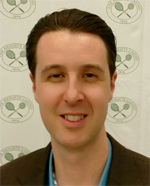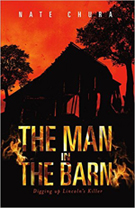What is the Junior Tennis
Champions Center?
Nate Chura
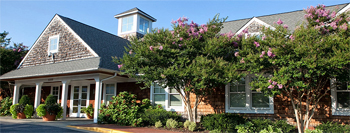
Unless you are dialed into high level junior tennis, you probably haven't heard of it, much less know that it's located just up the road from The White House.
That's the Junior Tennis Champions Center (or the JTCC) with it's highly unlikely location in College Park, Maryland, nine miles northeast of 1600 Pennsylvania Avenue.
In little more than a decade, JTCC players have won more than 50 national and international junior titles. Last year 37 players were ranked in the top fifty in the country in their age divisions. The year before an astounding 35 of the 124 players in the Super Nationals came from the center.
That's one local center producing 25 percent of the elite national tournament players. More and more observers view the Junior Tennis Champions Center as the most progressive tennis center in the country. But it's not just what the center has done in the 12 plus years of its existence, it's how.
To investigate that I took a tour of the facility, and interviewed the staff, from the CEO to the front desk. I also had the chance to watch a training session of some of program's elite juniors.
Dennis Kudla, currently nearing the top 100, developed there. So did Francis Tiafoe, who last year was the youngest winner at the Orange Bowl, arguably the most important junior tournament in the world after the Junior Slams. (Click Here to see Tiafoe in action at the Orange Bowl.)
Just this April Tiafoe backed that up by winning the Easter Bowl in Indian Wells, a show case for the top American juniors. (Click Here to see Future Stars with American juniors from the Easter Bowl since 2008.) Both players worked extensively with Frank Salazar, a former world number one junior himself, and now the JTCC director of high performance.
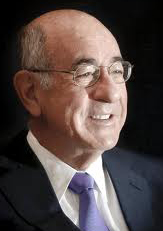
A Progressive Financial Structure
There are several key ingredients that make the Junior Tennis Champions Center unique. The first is the center's financial structure, created by founder Ken Brody, who could go down as one of the great tennis visionaries of this century.
Brody is the co-founder of the Capital Advisors, a hedge fund currently valued at roughly $9 billion. He built the Junior Tennis Champions Center from scratch.
In 1999, while working for the Clinton administration, Brody says, "I increasingly became curious about the potential for tennis to transform kids' lives. Then one day I finally decided to just do it."
"What I really wanted," says Brody, "was to give scholarships to kids who couldn't afford to pay for training, the main objective being, to get kids into college through scholarships."
But, unlike most academies, JTCC does not have dormitories or on-campus housing for its players. Most of the juniors in the Champions' Program are from the greater mid-Atlantic region. The few who are not live in homes of families with kids in the program.
In order to pay the roughly $40,000 per year it costs to fund the average junior in the full-time Champions' Program, Brody needed to construct a viable business model. This is based on the facility's for-profit College Park Tennis Club (CPTC), which operates just like any other first-rate tennis club in America.
One hundred percent of the club profits go straight to financial-aid for juniors enrolled in the Champions' Program. But this income source is also supplemented by private fund raising.
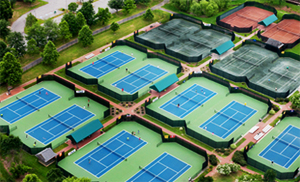
An Inspirational Tennis Facility
Beyond the financial foundation, a second factor in the success of the JTCC is the inspirational atmosphere. When I pulled up to the cedar-shingled clubhouse, the center looked like a large country home in a bucolic setting.
George T. Myers, who designed the facility, attempted to replicate the feel and style of the Newport Casino, which houses the International Tennis Hall of Fame in Newport, Rhode Island.
"I spent so much of my life at tennis facilities," says Myers, a former college player, "I knew which ones I liked and what was good about them."
"We did the courts in banks of two and made them all feel individual, as opposed to long rows of tennis courts." The 32 courts, include har tru, red clay, and indoor, as well as hard courts, and a fitness center that has received the USTA Tennis Facility of the Year.
Staff
A third factor in the success of the JTCC is management. Ray Benton oversees all aspects of the organization as JTCC's Chief Executive Officer.
"Ray is a guy who can do it all," says Brody. "He captures every element of what somebody in his position should be doing, from being a natural leader, to understanding management, to being able to deal with kids and pros, and deal with people in difficult situations. He's able to raise money. Ray has done a triple-A job. "
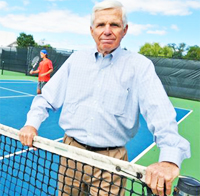
Benton was the first national director of the National Junior Tennis League, founded by Arthur Ashe. He's a former sports agent who started the Nuveen Champions Tour with Jimmy Connors back in the mid-nineties.
During my interview with him, we were interrupted by, among other things, a visit from a local councilman and a phone call from Pat Etcheberry, the noted tour physical trainer. Click Here to see Pat's seminal series on Tennisplayer!)
"We have a true pathway," Benton says, "We can take a five year old and handle him all the way to eighteen."
A key aspect of the pathway is the integration of entire families.
"We've got a free adult tennis program--free to anybody." says Benton. "You certainly have a much greater chance to get a kid to play tennis, if the family plays.
"How many kids have we introduced to the game at age six, as an industry, and at age twelve they become interested in something else and never come back to the sport?"
"But if their family plays, there's a pretty good chance they're going to continue to play. Plus, it's adults who buy racquets and tickets to tennis tournaments. They're the economic base."
Ajay Pant, the general manager of the center, is also the director of its 10-and-under program as well as chairman of the USTA National 10-and-Under Task Force.
According to Pant, one of the unique ingredients central to JTCC's success is the ability to house highly-skilled juniors, seasoned pros, and adult beginners all under the same roof.
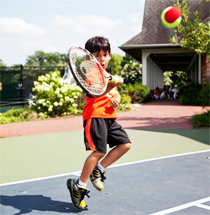
"You need juniors to fuel more juniors," says Pant, "but if it's done correctly, you have adults fueling more juniors and in turn fueling more adults. "To the best of my knowledge," he says, "this might be the only place in the country that has this."
"Most programs You have some stand-out juniors, a lot of adults, but not a legitimate, quantifiable pathway from the age of 4 on that includes your family."
How does it work for kids?
Sign your child up in an appropriate 10-and-under program. Then, if your child is motivated and shows promise between the ages of 7-12 they will be invited to join the Junior Champs program, which consists of tennis and fitness training 2-5 days a week and summer camp.
From there, if the child continues to show promise and possesses the right work ethic, they will be invited to join the full-time Champions' Program. In this year-round program, players train a minimum of two hours a day and compete in sectional, national, and international tournaments.
A Teaching Mentality
The next factor is the teaching. Benton told me, "We have the best coaching staff in the country. "
"If you're not really a coach, deep down, I don't think this is the right place for you," Pant says. "The people here love coaching and teaching. You can't fake that."
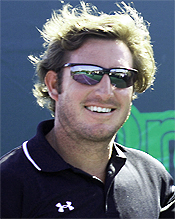
"I only hire people with a teacher's mentality," says Vesa Ponkka, the senior tennis director. "I want them to be individual thinkers and have common sense. It's not how much you know, but what you do with your knowledge."
Coaches are encouraged to push the envelope and given permission to make mistakes. "If you don't make any mistakes, you are not trying hard enough," Ponkka says.
At JTCC, the coaches are in it for the long haul. "Our core people have been here for the whole journey," says Ponkka. "That is really important."
"One interesting thing to note," says founder Brody, "is that none of our pros had a successful professional career as a player. I think there's a big myth that great trainers need to have played serious professional tennis."
The most important quality? "The belief that teaching kids is your ideal job, being totally interested in how the kids are coming along."
At JTCC, when a coach is talking, every kid has to have an eye on the coach. Nobody else can talk. The kids must pay full attention.
"The coach has to have total control over the environment," says Ponkka. "You cannot compromise. It is such a basic thing, but it goes wrong all the time. We have asked top five players to leave our program, because they were disturbing our work."
Red, Orange, and Green Balls
The 10-and-Under ball progression might be the subject of fierce criticism by many coaches and parents, but the opposite is true at JTCC.
"Playing in the progressive red, orange, green stages," says Pant, "is a built in feeder system. It's just a logical progression."
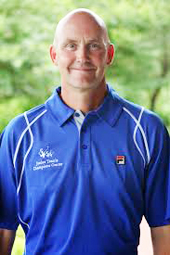
JTCC's top stars all worked their way through this progressive system, including Kudla and Tiafoe. The JTCC is producing the first wave of American players to do so. In fact critics might be shocked to know that at JTCC elite players continue to use the colored balls.
They're often cycled into the recovery phase of training if a player has been playing hard for four or five weeks. They are also used in rehabilitation.
"When Denis Kudla was injured," says Vesa Ponkka, "he returned to the game using foam and soft balls." The JTCC also uses the colored balls in adult programming that has adults rallying in ten minutes.
Sound Fundamentals
When most coaches talk about fundamentals they use words like "grip" and "backswing" and "contact point" and so forth. But at JTCC there is equal emphasis on "non-traditional fundamentals."
One of the non-traditional fundamentals is "learning fast." As I observed the juniors in the Champions' Program practice, I couldn't help but notice how quiet they all were.
"It's not silence," Ponkka says. "It's being focused. You never see a kid here who is disturbing the practices."
It's also the coaches' job, at least once a day, to take the player out of their comfort zone, then show them the way back.
For an example, Ponkka pointed to two juniors who were practicing in front of us. "Let's say these two have an upcoming ladder match to move up to a different group.
"We hype it up all week and then right before the match I tell them, Okay, you guys, change racquets. You have to play this big match with the other guy's racquet."
Education
To date, 100 percent of JTCC graduates have earned scholarships to leading universities and colleges, or pursued careers in professional tennis.
JTCC players go to local schools, but can also select learning options through Laurel Spring a private, long-distance, learning school that provide more flexibility to train on court and travel to tournaments without suffering in the classroom. In addition to this, JTCC has teachers who tutor.
Genuine Guidance
Unlike other high-performance tennis academies that seek to monetize the junior player and/or their parents, JTCC is looking out for their interests long-term.
In another life, Ray Benton was a successful sports agent. He was once a partner at ProServ, one of the first sports management agencies in the world.
At the company's peak, ProServ represented some of the biggest stars in sports. The short list included Jimmy Connors, Ivan Lendl, Arthur Ashe, Patrick Ewing, and Michael Jordan. But these days Benton is in the business of protecting players from agents.
"I'm here to keep kids from making bad judgments."
Speaking of Francis Tiafoe, a player who seems to have unlimited prospects, he said this:
"At the very least," says Benton, "Francis is looking at a full, four-year scholarship at a major university," which Benton calculates to be worth roughly $100,000 a year. "And that has nothing to do with the value of college education, after tennis is over. That's on top of it."
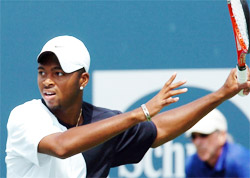
For most juniors, this would be a dream come true. But players with Tiafoe's talent and potential have the option of turning pro, which may be in the interest of sports agents, but not necessarily the kids themselves.
Take the example of Donald Young. A decade ago Young won the Easter Bowl at the age of 14. Before the year was out, he had signed a contract with IMG sports agent Gary Swain and turned pro, rendering him permanently ineligible to play college tennis.
Was that the right decision? Consider John Isner has earned $5.8 million since graduating from the University of Georgia, compared to Young's $1.5 mil, since age 14.
Benton says he's not opposed to his juniors turning pro before college, but insists, "It should take a lot of money for a kid to even consider not taking that four year scholarship."
Parents and juniors at JTCC have Ray Benton advocating on their behalf, a man who knows the pitch from the other side. "A lot of kids make bad choices," says Benton regretfully. "Hopefully they won't be from here."
Here's Francis Tiafoe's quote in the Times on his big Orange Bowl win: "If you really look down at the champions, there are some champions that have won that tournament that I've never heard of. And I don't want to be that guy."



